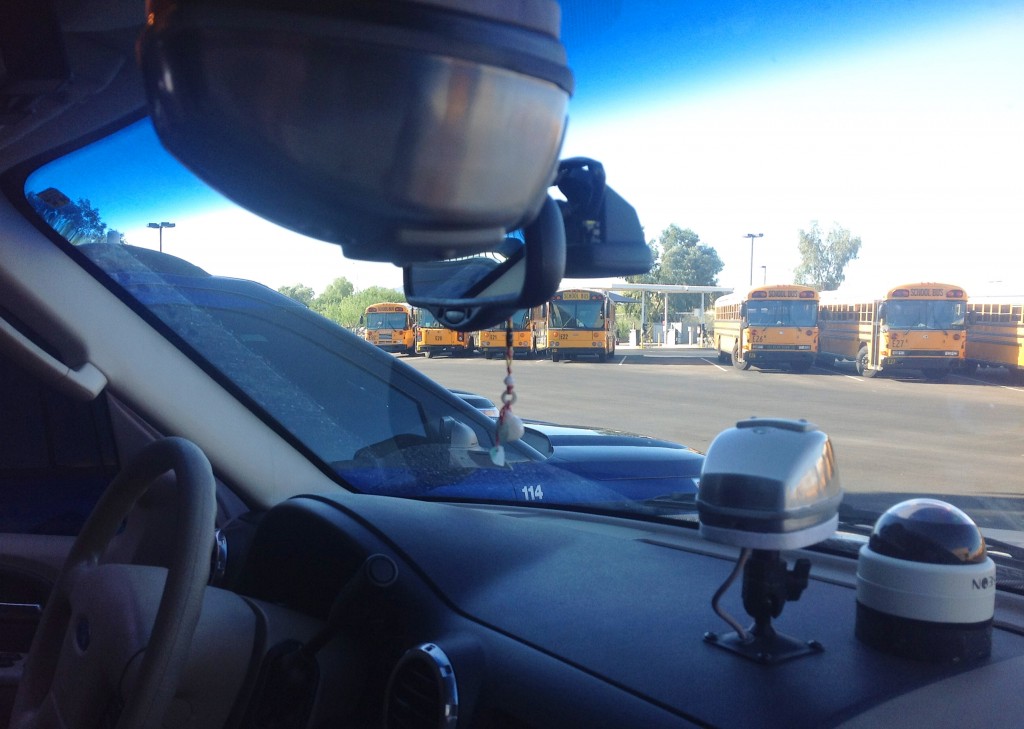2013 is here, and school bus safety continues to be as hot a topic as ever. The tragedy at Sandy Hook Elementary has put student safety concerns at the forefront and led to the development of many security goals for school bus transportation directors and their staff. Last year’s news stories on bullying, driver behavior and training, stop-arm violation tragedies, and GPS and student tracking technology have increased the public’s awareness of the challenges to student safety and put pressure on transportation managers to find better solutions to protect students. Here are Seon’s top predictions for school bus safety in 2013:
1. Anti-bullying strategies will be a top priority
Bullying has been a community-wide epidemic for decades; but with recent high profile events, we anticipate that anti-bullying strategies will remain a high priority in school bus safety. Anti-bullying training for school bus drivers will become more prominent supported by numerous programs (http://www.isboa.ca/Anti-BullyingTrainingforSchoolBusDriverOntario ). Many school districts and their affiliated school bus operators associations will hold professional days for drivers to discover the recognition of bullying behaviors, practice strategies to reduce those encounters on the bus, and investigate many subjects related to bullying.
Another way to address bullying is with interior school bus cameras. Cameras may dissuade bullies from acting out in the first place on the bus. If it is not enough to prevent bullying from happening, the footage can help by catching the bully in action so that the situation can be dealt with appropriately.
Bullying captured on video can have a positive outcome. Take the story of school bus monitor, Karen Klein. Rather than students being victimized of bullying, Karen herself was viciously bullied by students on the school bus. The video of her being bullied went viral, and was so effective that an internet campaign was launched to support Ms. Klein raising approximately $700,000. The students involved also were suspended from attending their regular school and riding the school bus for an entire year (http://www.bbc.co.uk/news/world-us-canada-18656095 ).
Karen’s story further inspired changes to the school district’s bullying policy: http://www.whec.com/news/stories/S2756087.shtml?cat=565
2. Increased adoption of stop-arm cameras
Stop-arm violations garnered a huge amount of press over the past few years, further highlighting the tragedy that can result from stop-arm running. Pressure is being put on law enforcement to increase enforcement in problem areas and has resulted in renewed interest in programs to further reduce the incidences. For instance, in 2009, in Stoneville, North Carolina, 16-year-old Nicholas Adkins was crossing the street, hit, and killed by a vehicle that ignored the stop-arm of the school bus. After that incident, North Carolina passed the Nicholas Adkins School Bus Safety Act that allowed the use of automated camera and video recording systems to detect and prosecute violations (http://www.ncga.state.nc.us/Sessions/2009/Bills/House/PDF/H440v5.pdf ). This is just one of many cases like this one. Stop-arm cameras are an important tool in capturing the license plates of vehicles illegally passing a school bus and can help reduce stop-arm violations.
As the laws change state-by-state to accept stop-arm camera footage as evidence in court, the adoption of stop-arm cameras is only going to multiply.
3. GPS & student tracking technology will gain traction
According to Frost & Sullivan’s 2008 report on North American School Bus Telematics, declining costs of wireless plans and telematics hardware will increase adoption of GPS technology through 2013. School bus operators will be looking to equip their fleets with live GPS systems (http://vmaxlive.seon.com/) and student tracking technology that will identify the exact location of not only the school bus, but the students on it. School bus transportation directors and managers will be able to access live, real-time fleet information, anywhere, anytime, and get instant insight on any driver, vehicle, or route, . Further developments in GPS and mobile video technology working together will yield a more complete view of exactly what’s happening on the bus and where. Emotional situations, like a child that has gone missing, do not have to escalate; the information can be obtained, instantly delivering parents and administrators greater peace of mind.
4. More cameras will be added to school buses to eliminate coverage gaps
Cameras on school buses aren’t a new thing; however, as school bus operators get more experienced with the technology we are seeing an increased need to add more cameras to the school bus to eliminate gaps in camera coverage.
Some of Seon’s customers note that student passengers are becoming more aware of camera coverage, and know where they need to sit in order to avoid being captured on video. Because of this, transportation directors are adding more cameras inside the bus to make sure that there are no gaps in coverage. Take Salem-Keizer Public School for instance: Transportation Director, Michael Shields, noticed that his students discovered the gap in bus camera coverage. Shields is now looking at adding a fourth interior camera so that coverage was increased, and students could not avoid being recorded (http://www.schoolbusfleet.com/Channel/Management-Training/News/2012/09/25/Ore-district-revises-bell-times-cuts-road-calls.aspx). Another reason for adding extra cameras to the school bus is for accident reconstruction. Forward-facing cameras are primarily used to capture footage of traffic and pedestrians in front of the bus. In order to know what happened in the case of an accident, forward-facing cameras are a great addition to the school bus for legal evidence.
The safety of drivers and passengers on the school bus is paramount. In 2013 we expect that school bus safety strategies will only become more advanced, and we look forward to many new success stories.
What are your predictions for school bus safety in 2013?
Click the graphic to see how you can get your fleet up to speed for 2013: 


